© 2023 All Rights Reserved. Don’t distribute or repurpose this work with out written permission from the copyright holder(s).
Printed from https://www.damninteresting.com/from-where-the-sun-now-stands/
An American Indian man on horseback stood outlined in opposition to a steely sky previous noon on 05 October 1877. Winter was already settling into the prairies of what would quickly turn out to be the state of Montana.
5 white males stood within the swaying grass on the opposite aspect of the sector, watching the horse transfer nearer. 4 wore blue uniforms, one other in civilian apparel. One of many uniformed males was tall and stout, with vibrant blue eyes and a big, curling mustache. He watched the proceedings with an air of self-importance. The give up of the person on horseback may need been inevitable, positive, nevertheless it was nonetheless a pleasant feather in his cap. Maybe his superiors would lastly grant him that promotion after this complete affair was over.
The opposite 4 males had been extra apprehensive. All of them had been skilled in combating American Indians on the frontier, however this opponent had been totally different. One man, with a full, darkish beard and proper arm lacking under the elbow, seemed on the approaching chief with grudging respect. The person had misplaced his arm within the American Civil Struggle 15 years earlier, so he knew battle effectively. And in his opinion, the person throughout the sector was a tactical genius, a “Purple Napoleon.” Regardless of overwhelming odds, this Purple Napoleon had wormed his approach out of battle after battle, by some means all the time popping out on high.
Till now, that was. Now he was surrendering to the U.S. navy.
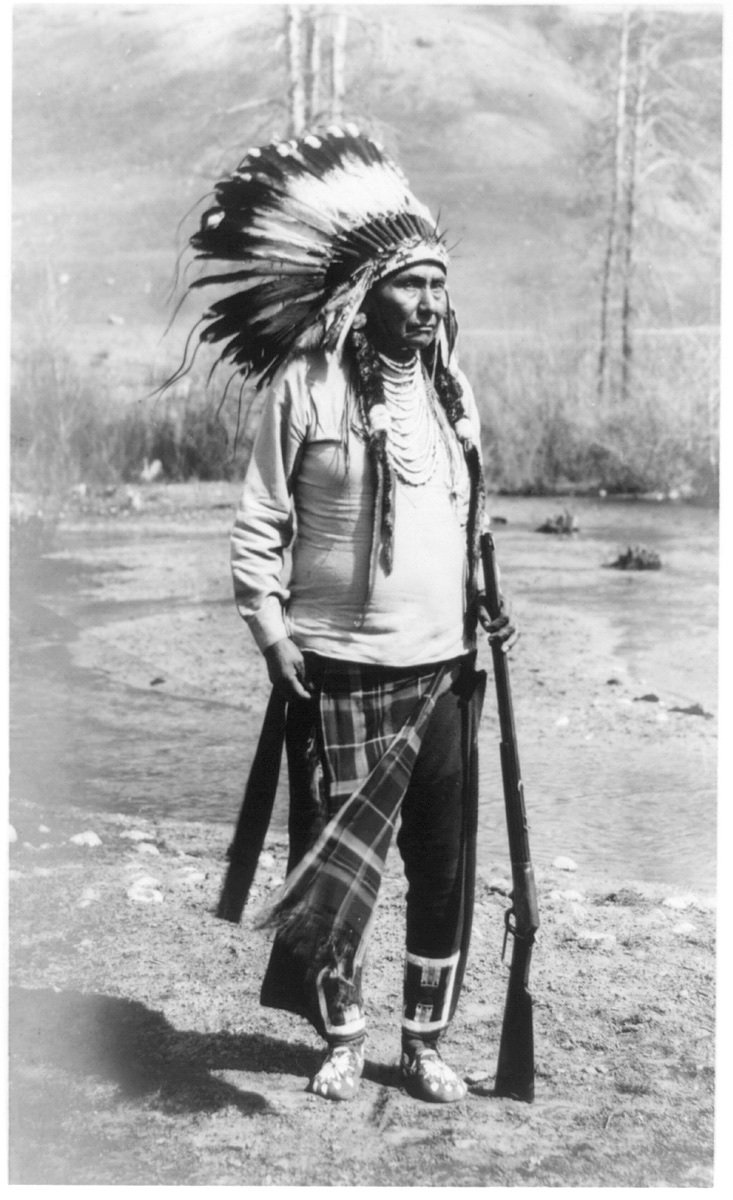
Surrounding the horse had been 5 others, strolling with their palms on the horse’s flanks. All of them wore blankets, the perimeters flapping within the snowflake-flecked wind. The person on horseback wore a blanket throughout his proper shoulder to his left arm, revealing buckskin leggings and a shirt tattered with bullet holes. His hair was pulled again into two lengthy braids, and tied up with otter pores and skin. A rifle lay throughout his lap.
Chief Joseph of the Nez Perce tribe slid off the horse and approached the boys in uniform, nonetheless holding his rifle. He held out the weapon to the person with out an arm, however the latter shook his head. As an alternative, the person with the massive mustache stepped ahead and took the weapon, a snub Winchester 1866.
One of many navy males readied a pen and a bit of paper to take down the phrases of give up. The civilian stood subsequent to him, an area who had graciously volunteered to translate this vital second. The give up of Chief Joseph would positively make headlines in all of the East Coast newspapers.
Adjusting his blanket, Chief Joseph raised his palms to the sky and spoke in his native language. The civilian translated for the officers: “From the place the solar now stands, I shall battle no extra.”
Because the story of the assembly on the grassy subject was advised and retold, printed and reprinted in newspapers and books, it took on a mythic high quality. The person on horseback turned a logo for the predestined trajectory of a nation, one by which the individuals who had lived within the Wild West for millennia light away to make room for the American settler.
However for the individuals who lived by way of that fateful second, it appeared removed from inevitable. In actual fact, to the Nez Perce, all the things about that story was incorrect.
That yr—1877—was a turning level in American historical past: the U.S. authorities formally ended Reconstruction and pulled the final troops from the previous Confederacy; Colorado turned the most recent American state; and in Canada, Alexander Graham Bell put in the primary business phone. And on 07 Might in a small frontier city in northern modern-day Idaho, six males gathered in a canvas hospital tent with the perimeters looped as much as let within the early summer time breeze. On one aspect sat two white males: John Monteith—the agent assigned to the Nez Perce Reservation—and Brigadier Common Oliver Otis Howard.
The final wore a navy uniform, the empty sleeve for his lacking proper arm pinned to the entrance. After graduating from West Level Army Academy in 1854, he had shortly risen by way of the ranks of the Union Military. Males who fought with him remarked on how unsettlingly calm he appeared throughout battle, even when a bullet punched by way of his proper wrist on the Battle of Honest Oaks in 1862. Howard attributed this trait to his zealous devotion to evangelical Christianity.
It was his Christianity that drove him to keep away from sending runaway slaves again to their homeowners through the warfare, after which to just accept the place of Commissioner of the Freedmen’s Bureau afterward. To the dismay of President Andrew Johnson, Howard instituted rations, faculties, courts, and medical look after just lately freed slaves. He helped discovered a university that accepted college students no matter race or gender. Howard College continues to be an vital traditionally Black school in the present day.
However Congress abruptly dropped the Freedmen’s Bureau in 1872, and shuttled the final off to the frontier to take care of the “Indian downside”—specifically, that they had been residing on land that white settlers needed. Howard’s job was to place as many tribes as attainable onto a reservation, the place they’d be assimilated into white Christian tradition.
Howard was removed from happy by this flip of occasions. Not solely was the job a demotion, nevertheless it ensured he’d be too busy to intrude as governments giant and small meticulously undid his years of labor towards racial equality. However Howard was a soldier, and he did as he was advised: the tribes would transfer, peacefully or by drive.
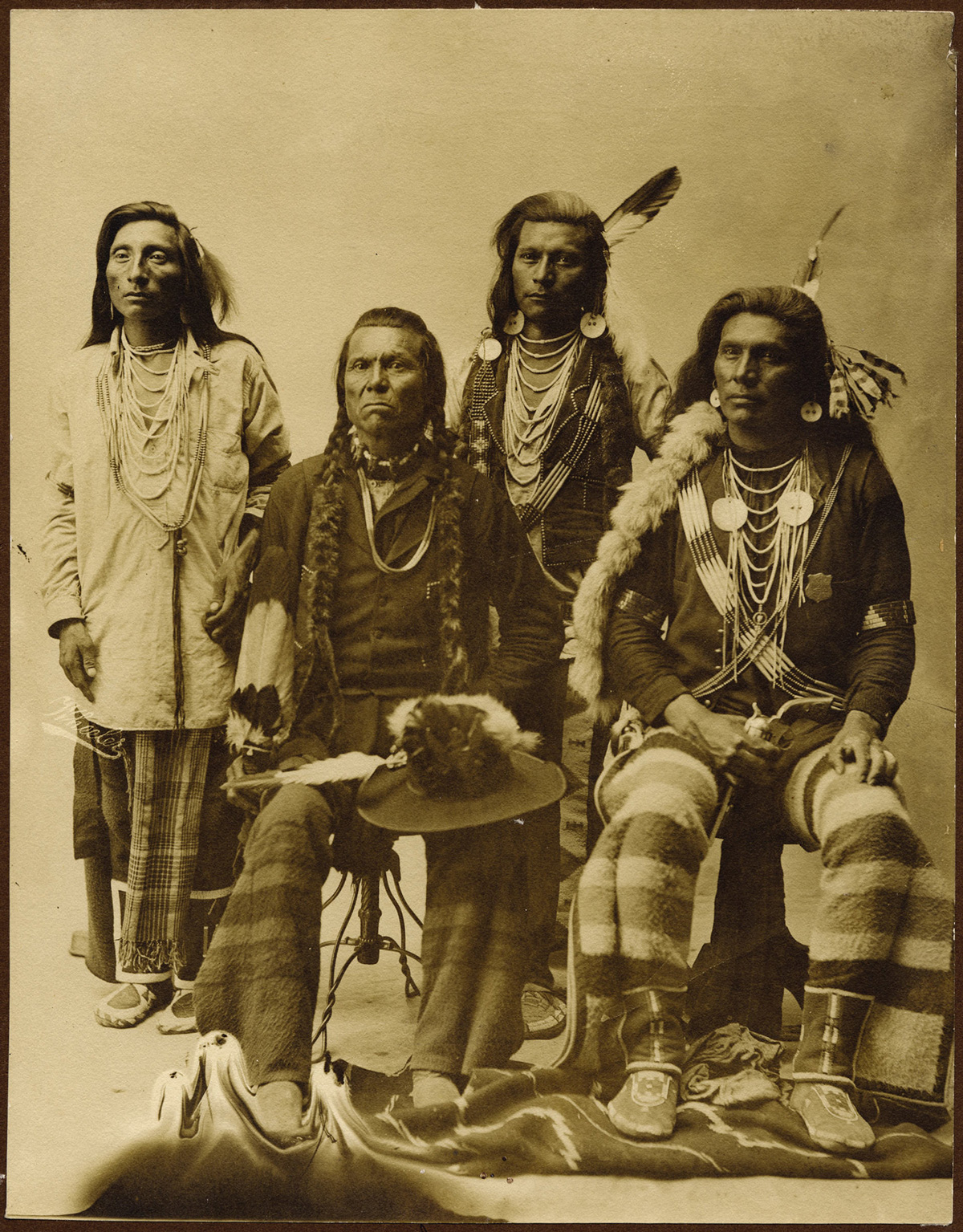
On the opposite aspect of the tent had been 4 Nez Perce, dressed of their conventional garb of buckskin and woven blankets. The identify meant “pierced nostril” in French. Though the tribe sometimes sported nostril jewellery, the identify was probably a results of mistranslating the signal language that tribes of the Pacific Northwest used to speak throughout their many languages. In reference to the truth that the tribe frequently crossed the Bitterroot Mountains to hunt bison on the Nice Plains, the index finger of the appropriate hand pointed up and down beside the face. To early French explorers, the gesture resembled piercing the nostril. The tribe most popular to name themselves the Nimiipuu, translated because the “actual folks.”
The American Indians on the assembly every represented a band of Nez Perce. Alalimya Takanin, also referred to as Trying Glass, was a no-nonsense chief as confirmed in battle as Howard. Peopeo Kiskiok Hihih, also referred to as White Chicken, represented the proud continuation of an extended line of warriors, now soft-spoken and well-respected in his 70s. The third and strongest was Toohoolhoolzote, a powerfully constructed man who may carry a blacktail buck underneath every arm on his approach again from a hunt.
The fourth and youngest was solely in his 30s. He’d spent his youth consuming and carousing, main some to suppose that his youthful brother is perhaps higher suited to management. However he had matured right into a cautious, well-spoken chief with a strong chest and shoulders. His identify was Heinmot Tooyalalkekt, higher often known as Chief Joseph.
The Nez Perce chosen Toohoolhoolzote to talk for them. For 2 days, Toohoolhoozote tried to clarify to Common Howard that the 1863 treaty had been signed by solely a small band of Nez Perce, so it had no authorized authority to drive your entire Nez Perce tribe onto a reservation.
Howard wasn’t listening. Negotiating with the Nez Perce would appear like a approach for him to proceed his quest for racial equality after his developments from the Freedmen’s Bureau crumbled throughout the South, however there have been two causes that wasn’t going to occur. First, in contrast to the freed slaves that Howard had served within the Freedman’s Bureau, the Nez Perce weren’t completely satisfied to see him. The whole annihilation of Common George Armstrong Custer’s firm by the hands of the Sioux one yr earlier made it abundantly clear that American Indians weren’t within the U.S. navy’s “assist.”
The second cause needed to do with the haircuts of the boys throughout the tent. Chief Joseph and Toohoolhoozote wore their hair lengthy, aside from a thick portion throughout the brow that was reduce brief and swept up. The fashion recognized them as adherents for the Dreamer motion, a non secular fever that unfold throughout the American Indians of the Pacific Northwest within the 1850s. It emphasised a return to custom and satisfaction in native tradition, which immediately contradicted Howard’s evangelical Christianity. In his view, the boys throughout the tent had been unrepentant heathens.
Toohoolhoozote tried, as soon as once more, to clarify to Howard that they may not abandon the Wallowa Valley as a result of white farmers would instantly desecrate their sacred Mom Earth with farming gear. However so far as Howard was involved, it wasn’t a matter of if the Nez Perce had been going to a reservation, however when. “Twenty occasions over I hear the earth is your mom,” he stated, “I need to hear it no extra, however come to enterprise without delay.”
Toohoolhoozote replied, “As long as the earth retains me, I need to be left alone; you’re trifling with the regulation of the earth.”
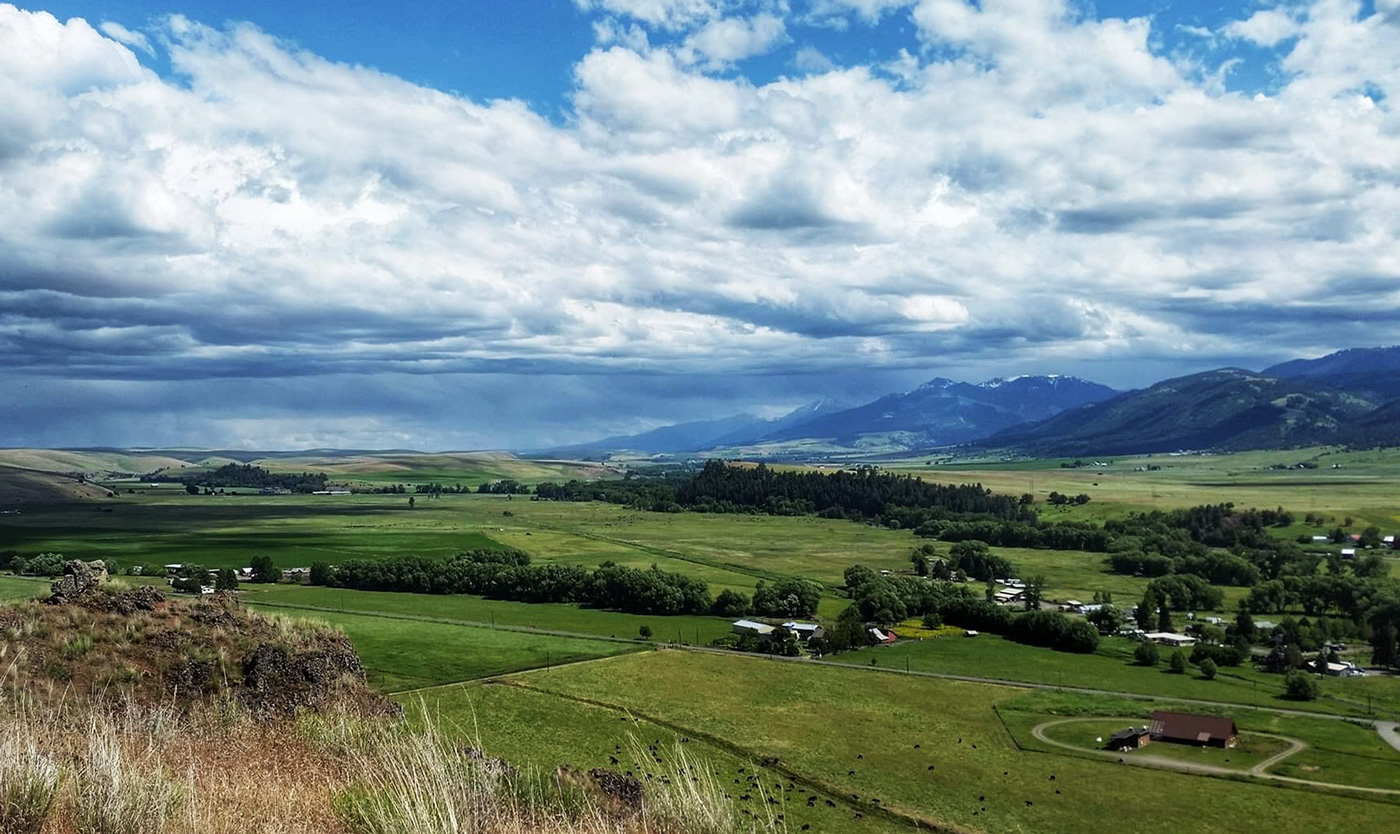
“The query is,” Howard requested, “will the Indians come peacefully on the reservation, or do they need me to place them there by drive?”
“I by no means gave the Indians authority to provide away my land,” Toohoolhoolzote repeated, referring to the treaty with the small band of Nez Perce. Within the navy’s file of that day, Toohoolhoozote added, “The Indians could do as they like, however I’m NOT happening the reservation.”
The Nez Perce, nevertheless, recall a extra colourful response: “I’ve a penis, that which belongs to a person! I’m a person, and I can’t go!”
Both approach, Howard’s mood boiled over. “I’ll ship you there,” he snapped, “if it takes years and years.” He known as for one more soldier. The 2 grabbed Toohoolhoozote’s arms and pulled him into a close-by guard home, locking the door.
Joseph, Trying Glass, and White Chicken stared at Howard in disbelief. This was speculated to be a peace discuss, however the true intention had simply been made clear. This was a fist wrapped in child gloves. Howard knowledgeable them that they’d 30 days to vacate the Wallowa Valley and transfer to their new reservation.
The subsequent few weeks had been a flurry of exercise. Though the Nez Perce moved seasonally, they by no means crossed the Snake River till summer time. In late Might, it could be swollen with snowmelt and raging dangerously. However the Nez Perce knew higher than to complain. They gathered their cattle, packed their belongings, and disassembled their teepees. Joseph fastidiously led his band throughout the chilly, turbulent river, leaving his homeland for the final time.
In early June, about 600 Nez Perce arrived at a well-recognized summer time campsite—Tepahlewam, or Break up Rocks, positioned among the many gently rolling, camas flower-covered hills of modern-day Idaho simply previous the state’s western border. Joseph’s band arrived first, however they had been shortly joined by Trying Glass, White Chicken, and Toohoolhoolzote, who’d been set free of the guardhouse the day after his detention.
The tribe was fewer than 100 miles from the Wallowa Valley, and all the things was each fully regular and horribly incorrect. Joseph’s 12-year-old daughter Tah-hy helped the ladies collect camas roots, a starchy bulb that preserved effectively by way of the winter, whereas the boys gambled and slaughtered cattle. His closely pregnant second spouse, Toma Alwawinmi, sequestered herself in a small teepee to provide beginning. The kid would develop up on the reservation that was just a few days’ journey away, and but felt like one other world.

On 13 June, White Chicken’s band determined to carry a te-lik-leen ceremony. The standard procession of warriors, the leaders thought, may arouse some optimism in these darkish occasions.
The soldiers rode their horses in a circle, boasting of their warfare deeds. Citing the rear, a spot reserved for the bravest, had been two cousins on a single horse: Wahlitits and Sarpsis Ilppilp. Nobody is sort of positive what occurred subsequent; in a single account, their horse trampled a pile of camas roots. In one other, they frightened a baby. What is definite is that within the subsequent pandemonium, somebody shouted to Wahlitits, “In case you are so courageous, why don’t you go kill the white man who killed your father?”
Of all of the Nez Perce, White Chicken’s band had suffered essentially the most by the hands of white settlers. Lots of the warriors bore scars from canine assaults or murdered family members. The younger males had been seething in regards to the military forcing them to desert their land. Chief Joseph had spoken with them at size in regards to the significance of peace. A warfare may restore the glory of some warriors, he argued, however the U.S. Military would finally destroy the tribe.
However Chief Joseph wasn’t there; he was away slaughtering cattle together with his brother Ollokot. He had no thought what was occurring again at Break up Rocks.
Wahlitits replied, “You can be sorry in your phrases.” The subsequent morning, Wahlitits, Sarpsis Ilppilp, and his 17-year-old cousin Wetyemtmas Wahyakt rode off to search out Larry Ott, the white settler who had murdered Wahlitits’s father three years earlier throughout a land possession argument. The soldiers couldn’t discover Ott, in order that they determined to kill 4 settlers who had a status of cruelty to the Nez Perce as an alternative.
Because the solar set on 14 June, the trio returned. Nez Perce elders had been holding a routine council (minus Trying Glass and his band, who already left for the subsequent leg of the journey) when somebody shouted from exterior the lodge, “You poor individuals are holding council for nothing! Three younger males have come from White Chicken nation, bringing horses with them! Horses belonging to a white settler they killed! Killed yesterday solar! It should be warfare!”
Many within the camp had been terrified; whites seldom distinguished between the acts of particular person members and the tribe. Even when they may persuade the federal government this was an remoted incident, the American authorized system hardly ever supplied honest trials to American Indians. These reckless younger males had doomed all of them.
The elders desperately tried to take management of the state of affairs, however the younger males weren’t listening. They had been offended, and somebody was lastly doing one thing. Sixteen males joined the unique trio. Collectively, they carried out the bloodiest American Indian assaults of the post-Civil Struggle period. Reviews of the violence differ wildly, because the Nez Perce tended to downplay whereas white settlers exaggerated. However some details are sure: between 14 and 22 folks had been killed, principally male white settlers who had wronged the Nez Perce. Girls and youngsters had been allowed to flee or had been briefly taken captive, leaving witnesses to the murders. Though the small communities alongside the northern Oregon-Idaho border knew that they lived amongst American Indians, they’d thought-about this type of rage to be a part of the previous. These assaults despatched a shock wave by way of their quiet existence.
When Joseph returned to Break up Rocks together with his recent beef, he was barraged with a flurry of data: the te-lik-leen, the murders, the raiding social gathering. He briefly thought-about going to the reservation as deliberate and explaining all the things to Howard, however dismissed the thought. “I can hardly return,” he stated. “The white folks will blame me, telling me that my younger males have killed the whitemen.” The Nimiipuu ready for battle.
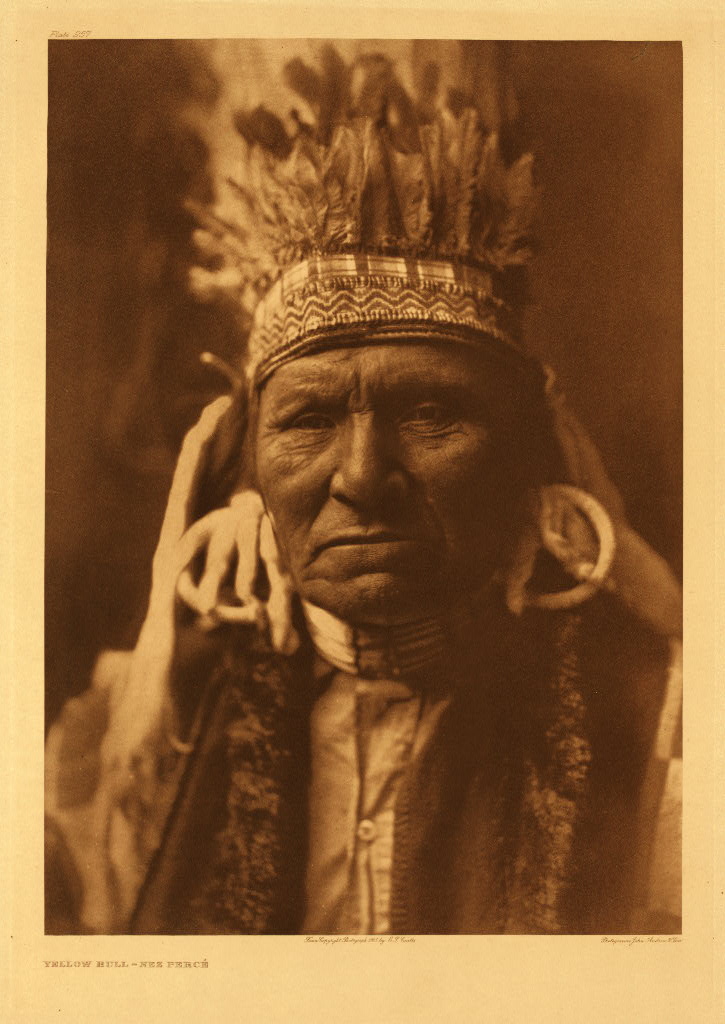
In the meantime, on 14 June, a number of Nez Perce warriors arrived at a ranch 7 miles from an Idaho city known as Mount Idaho. Arthur “Advert” Chapman was married to a Umatilla lady, a tribe pleasant with the Nez Perce. He and his spouse had even lived with Chief Joseph’s prolonged household for a time. The soldiers knowledgeable the couple that a number of rogue Nez Perce had been murdering white males and recommended that he and his spouse go away, simply to be protected. As an alternative, Chapman rode straight for Mount Idaho to unfold the information.
A bustling metropolis for frontier requirements (there have been two normal shops as an alternative of 1), Mount Idaho was simply 65 miles southeast of Fort Lapwai—shut sufficient for assist however too far for it to reach shortly. In a panic, townsfolk dug trenches and made barricades of wagons, logs, and flour sacks. Farmers and ranchers from the close by countryside took shelter in any public constructing obtainable, even the jail. “We’re within the midst of an Indian warfare,” they wrote to Howard, “Give us aid, and arms and ammunition…Hurry up; hurry!”
As 15 June dawned, Howard awakened able to welcome the Nez Perce to their new reservation. It had been greater than a month since he’d seen the Nez Perce chiefs, and so they had been so splendidly cooperative with all his calls for. Final he’d heard, they had been tenting just a few days away at Tolo Lake, proper on schedule to satisfy up with the 1863 treaty-signers that had already arrived. At 9 within the morning, the final was greeted with information of the murders.
As Howard determined tips on how to reply, the Nez Perce already on the reservation responded with shock. A number of folks, together with Joseph’s father-in-law, tried to clarify to Howard that this all should be a horrible mistake. They supplied to satisfy with Joseph and resolve the difficulty. They might deliver the murderers to justice, they insisted. Regardless of their pleas, Howard despatched the cavalry of Fort Lapwai to Mount Idaho.
On the morning of 16 June, Joseph’s band joined Toohoolhoozote’s and White Chicken’s in Lahmotta, a few half-day’s stroll south of Break up Rocks. Identified to the white residents as White Chicken Canyon, the Nez Perce had chosen this acquainted campsite due to its steep partitions and rolling buttes. The soldiers returned from their violent exploits, assured of their deeds and able to defend their tribe.
Whereas the Nez Perce leaders deliberated what to do subsequent, the boys found that the raiders had stolen extra than simply horses. There have been barrels of whiskey, baskets of champagne, and bottles of brandy. Within the shadow of impending annihilation, the soldiers drank with enthusiasm.
After 24 hours of driving, the cavalry from Fort Lapwai collapsed into their bedrolls on the outskirts of Mount Idaho. Because the cooks boiled gallons of bean soup, a ragtag group of males with rifles entered the camp. They had been a kind of volunteer militia of native residents that had stored watch whereas they waited for the Military to indicate up. On the entrance was a person on a white horse, sporting a big, white, wide-brimmed hat. It was Advert Chapman, and he had extra information to share.
Chapman advised the troopers that he had lived with the Nez Perce and knew their language. The campsite in White Chicken Canyon that the tribe presently occupied contained a crossing level for the Salmon River, which might enable them to simply slip away at a second’s discover. In the event that they needed to win this warfare, he advised them emphatically, they needed to strike now, or the Nez Perce would escape.
Indians had been cowardly scoundrels, Chapman continued. It was just some males guarding girls and youngsters. A straightforward victory. An opportunity to take the frontier again. Earlier than they may even end their soup, the troopers had been ordered up once more.
Within the early hours of the morning, the Nez Perce warrior Itskimzekin (known as “No Ft,” as a result of he had none) got here galloping into camp from his sentinel submit. 100 well-armed cavalry stood simply over the ridge.
Toohoolhoolzote, White Chicken, and Joseph ran by way of the camp, awaking each warrior who was not hopelessly drunk. Of the 140 males, solely about 65 had been battle-ready. Armed with a medley of outdated firearms and bows and arrows, they waited for battle.
In a final, determined try for peace, the leaders despatched out a gaggle of warriors underneath the white flag with a suggestion to peacefully hand over the murderers. Because the peace social gathering crested the ridge, a group of cavalry officers waited to satisfy them.
Earlier than anybody may cease him, Advert Chapman pointed his rifle on the peace social gathering and fired. Whether or not they favored it or not, the warfare had begun.
Down within the valley, a younger Nez Perce warrior named Yellow Wolf heard the shot and his eyes flew up the ridge. He noticed the massive white hat and acknowledged Chapman, who he’d met at his uncle’s home. The white man and his spouse had been friends. Now, Chapman had simply fired the primary shot. There wasn’t time to marvel why.
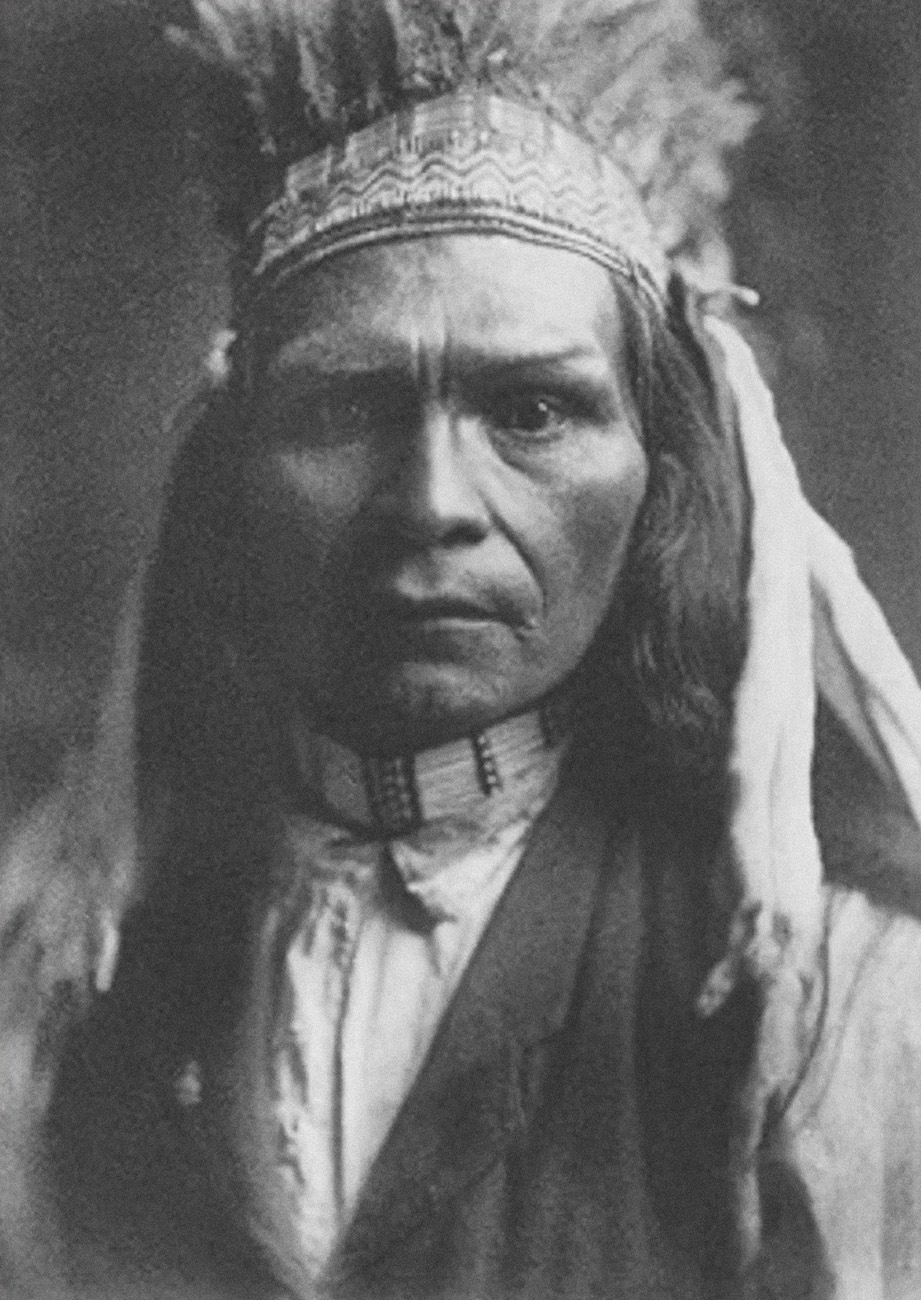
The Nez Perce returned the enemy fireplace with an accuracy that shocked the troopers. They may have lacked numbers, however the warriors had been effectively drilled in sharpshooting and wanted each shot to depend.
The cavalry moved into place on one ridge whereas civilian volunteers moved to a different. Already, the horses had been nervous and bucking from the gunfire. A bugler started to play the battle orders, however a sharpshooter shot the person off his horse mid-tune. When the captain frantically requested the second bugler to begin taking part in, the person found he’d dropped his instrument through the march. The troopers couldn’t talk.
Wahlitits, Sarpsis Ilppilp, and a 3rd warrior named Tipyahlahnah charged the appropriate flank of the cavalry. Every wore a pink blanket, hoping the brilliant colour would draw the troopers’ consideration. Using full gallop, they fired into the column.
Chapman seemed round on the chaos and determined that he’d had sufficient. Among the many hail of bullets, he turned and led the civilian volunteers in retreat.
“Chapman was an amazing chief,” a Mount Idaho native recalled wryly. “He had the lead going into the White Chicken battle, and he was within the lead going out of it.”
With the civilians gone, the cavalry determined to comply with Chapman’s lead. Their terrified horses bucked and scrambled up the steep slope to security. After they lastly made it to Mount Idaho, they realized that out of 100 troopers, 34 had been lifeless and two had been wounded. Not a single Nez Perce had been killed.
The victorious Nez Perce scrambled up the slope, gathering rifles from the lifeless. By attacking White Chicken Canyon, the cavalry had unintentionally supplied the tribe with a much-needed provide of weapons. The chiefs led their tribes throughout the Salmon River to get as far-off as attainable earlier than information of the defeat bought to Howard.
The Nez Perce had practiced warfare for hundreds of years, however this case was totally different. As an alternative of males combating males for honor and glory, the Nez Perce had been on the run with greater than 500 girls, kids, and aged. To not point out a number of hundred horses and 1000’s of cows, which had been the wealth of the tribe. It was a nasty state of affairs, and the tribe knew it.
Within the years afterward, Howard would say that Joseph had devised an excellent battle plan by observing the cavalry by way of a spyglass. Howard would describe Joseph because the Indian Napoleon; a person who eked out victory by way of navy prowess. It was simpler for him to consider that than the reality: {that a} handful of hungover Nez Perce warriors had rolled away from bed, grabbed a mishmash of weapons, and brought down 100 U.S. cavalrymen.
Howard hurried to strengthen the survivors. With greater than 200 whole calvary, infantry, and artillery troops, he arrived at White Chicken Canyon 5 days after the battle. He discovered solely a small variety of Nez Perce warriors, all safely on the opposite aspect of the violently dashing Salmon River. The soldiers shouted a litany of insults earlier than disappearing into the hills.
Howard assumed they had been going west, again to the Wallowa Valley. He ordered his males to cross the Salmon, which one soldier known as a “God-fearing boiling cauldron.” In a chilly rain, they adopted the Nez Perce path up a steep precipice. As they gained elevation, the rain turned to sleet.
After two weeks of driving, the path led again to the Salmon River. The tribe had by no means crossed it in any respect; solely a handful of warriors had made the trek to make it appear just like the tribe had traversed the river. Howard had fallen for a trick.
Dealing with the conclusion that he must cross the treacherous river once more, Howard wasn’t in a temper to be forgiving. He despatched Captain Stephen Whipple with males to arrest Chief Trying Glass.
For weeks, Trying Glass had been oblivious to the tribe’s predicament. His band had left Tepahlewan earlier than the te-lik-leen and arrived on the reservation as deliberate. Even after information of White Chicken Canyon, Trying Glass acted as if all the things was regular. Hopefully, the chief thought, the Military would go away them alone.
Whipple, his 66 cavalry, and a volunteer interpreter arrived within the early morning. Trying Glass was busy consuming breakfast, so he despatched a messenger to reiterate his neutrality. Whipple demanded to see the chief in individual. Trying Glass accurately assumed this was a ploy to get him out of the teepee and despatched the messenger again out to say no.
When the messenger reappeared with out the chief, a trigger-happy volunteer fired at him. The few Nez Perce warriors current returned fireplace, and shortly the entire camp went right into a panic. Girls, kids, and the aged fled as troopers set fireplace to their teepees. “After all this settled it,” a warrior later said. “We needed to have a warfare.”
When Whipple returned to Howard with a report that Trying Glass was not solely free, however now actively combating with the Nez Perce, Howard was livid. He ordered the captain to hurry forward and intercept the tribe at an deserted ranch, whereas he and the remainder of troops adopted behind. Whipple despatched 13 males to scout the street forward of his troopers. On the best way to the ranch, he found that every one of them had been killed by Nez Perce warriors. Quickly afterward, Whipple realized he and his males had been surrounded.
As Whipple exchanged rounds with the soldiers, a message arrived with information from Mount Idaho. As soon as once more, a gaggle of volunteers had determined to tackle the Nez Perce, and as soon as once more found it was more durable than they’d thought. The 17 males stated they had been up in opposition to 150 warriors (the Nez Perce say the true quantity was between 12 and 14) and dealing with sure annihilation. When an already-stressed Whipple reluctantly despatched his troops to rescue them, the Nez Perce vanished.
It was on this tense atmosphere {that a} man named Lew Wilmot approached Common Howard. Wilmot had been the earlier proprietor of the alcohol the Nez Perce drank earlier than the Battle of White Chicken Canyon, and one of many 17 volunteers in want of rescuing. He knowledgeable Howard that the Nez Perce had been camped at Cottonwood Creek and used his viewers with the final to go on a profanity-laden tirade in regards to the Military’s incompetence.
Wilmot had come across one of many realities of the Nez Perce Struggle: though the Military was formally in cost, the boys filling the ranks had been principally jap immigrants and Civil Struggle veterans unfamiliar with the encircling territory. This meant that the commanders needed to depend on native civilians for assist, and the locals had no real interest in adhering to navy process. As an alternative, to the Military’s immense frustration, they improvised. Badly.
At White Chicken Canyon, it had been a civilian who fired the primary shot. Similar with Whipple’s try to arrest Trying Glass. Priceless navy sources had been wasted due to trigger-happy civilian volunteers, and Howard’s persistence was operating skinny.
The locals, nevertheless, held a view shared by many nationwide newspapers: the Military’s job was to guard white settlers by killing American Indians. It didn’t matter how tough these settlers had been making it; in the event that they weren’t killing American Indians, they may as effectively go away. And proper now, the American Indians had been killing them. This was fully unacceptable. Rumors had been already swirling that Congress needed Howard fired.
Howard arrested Wilmot for abuse of an officer. He and his troops headed towards Cottonwood Creek, with volunteer Chapman main the best way. It was, in spite of everything, close to his ranch, and he was the one one who knew the terrain. Chapman accidently led the boys a full 2 miles previous the Nez Perce camp earlier than Howard realized his mistake and turned the corporate round. Chapman didn’t appear overly involved about this error.
With the Nez Perce tucked right into a small valley under them, the final determined it was time to make use of the howitzer cannon that had been dragged by three horses all the best way from Fort Lapwai. This present of clearly superior weaponry would absolutely trigger the Nez Perce to give up.
The cannon fired with a booming noise that echoed by way of the panorama. The Nez Perce seemed up with horror. As the soldiers ran for his or her weapons, Howard realized that the cannonball had fully missed the camp. The final frantically tried to consider a plan B, which gave Toohoolhoozote time to guide two dozen warriors up the steep bluffs and block the assault. Whereas each units of troopers fired at one another from protecting strains, the Nez Perce households packed up and slipped away. The Military suffered 13 lifeless and 27 wounded, a lot of them officers. The Nez Perce had 4 lifeless and 6 wounded.
When information of the battle unfold east, Montana settlers panicked. On 25 July, an area firm of troopers constructed a makeshift barricade throughout a Bitterroot Mountain cross. Locals confirmed up 50 at a time, able to defend the land the Military clearly couldn’t shield. However when the Nez Perce truly confirmed up, it was instantly clear that they solely needed to cross by way of. With no risk to their farms or properties, the locals abandoned in droves. The troopers had been left hopelessly alone in what jap newspapers dubbed “Fort Fizzle.”
With so many victories behind them, the Nez Perce now needed to contemplate one thing new: profitable. What would it not appear like? It was now clear that america would by no means allow them to stay peacefully in Wallowa Valley. However Howard solely needed their land, and now he had it. There was nothing left to battle over. So, as they noticed it, the tribe confronted a alternative that hundreds of thousands of immigrants contemplated all internationally: to remain in an unsustainable homeland, or to proceed their traditions someplace new.
Chief Joseph and the opposite chiefs determined to take the acquainted seasonal route over the Bitterroot Mountains and begin once more in a brand new homeland. Maybe the Sioux would assist them, or one other of their allies. They might begin a brand new life, away from the violence of the Pacific Northwest.
However whilst he led his folks to their new dwelling, Joseph wasn’t so positive about this plan. He’d moved away from the highlight throughout a lot of the marketing campaign, permitting the extra military-minded Trying Glass and Toohoolhoolzote to make warfare selections. Joseph was a politician, not a normal. His expertise was extra suited to overseeing the much less glamorous however equally vital activity of feeding and sheltering 500 girls, kids, and aged, in addition to tons of of animals. So, that was what he did. However Joseph had interacted sufficient with the U.S. navy to know this was about extra than simply the Wallowa Valley. This was about domination.
Common Howard, the high-ranking evangelical hero of the Civil Struggle, had been crushed time and again by a ragtag group of nonwhite heathens. That wasn’t speculated to be attainable. However simply as with the defeat of Custer’s firm on the Battle of Little Bighorn, the Nez Perce had revealed that the U.S. authorities may very well be resisted. And if the federal government ever needed to say dominion over the Wild West, the Nez Perce couldn’t be allowed to exist exterior their purview. That, of their opinion, can be letting the Indians win. And Indians didn’t win.
With failure after failure marring his file, it was clear to the Military that Howard wanted to get replaced. Colonel John Gibbon and his troops stationed at Fort Shaw, a number of hundred miles to the north, had been known as to intercept the Nez Perce. As the boys marched previous Fort Fizzle, they enlisted the remaining troopers.
After the lengthy journey over the Bitterroot Mountains, the Nez Perce allowed themselves a much-needed relaxation. They’d traveled throughout Idaho and had been simply over the Montana border, the place prairies as soon as once more dominated the panorama. Tenting within the willows of a excessive mountain valley on the fork of the Huge Gap River, households gathered to chop teepee poles, mend clothes, and maintain one other te-lik-leen ceremony to have a good time their new life in buffalo nation. Singing and dancing went on lengthy into the evening, for as Yellow Wolf later stated, “We had left Common Howard and his warfare in Idaho.”
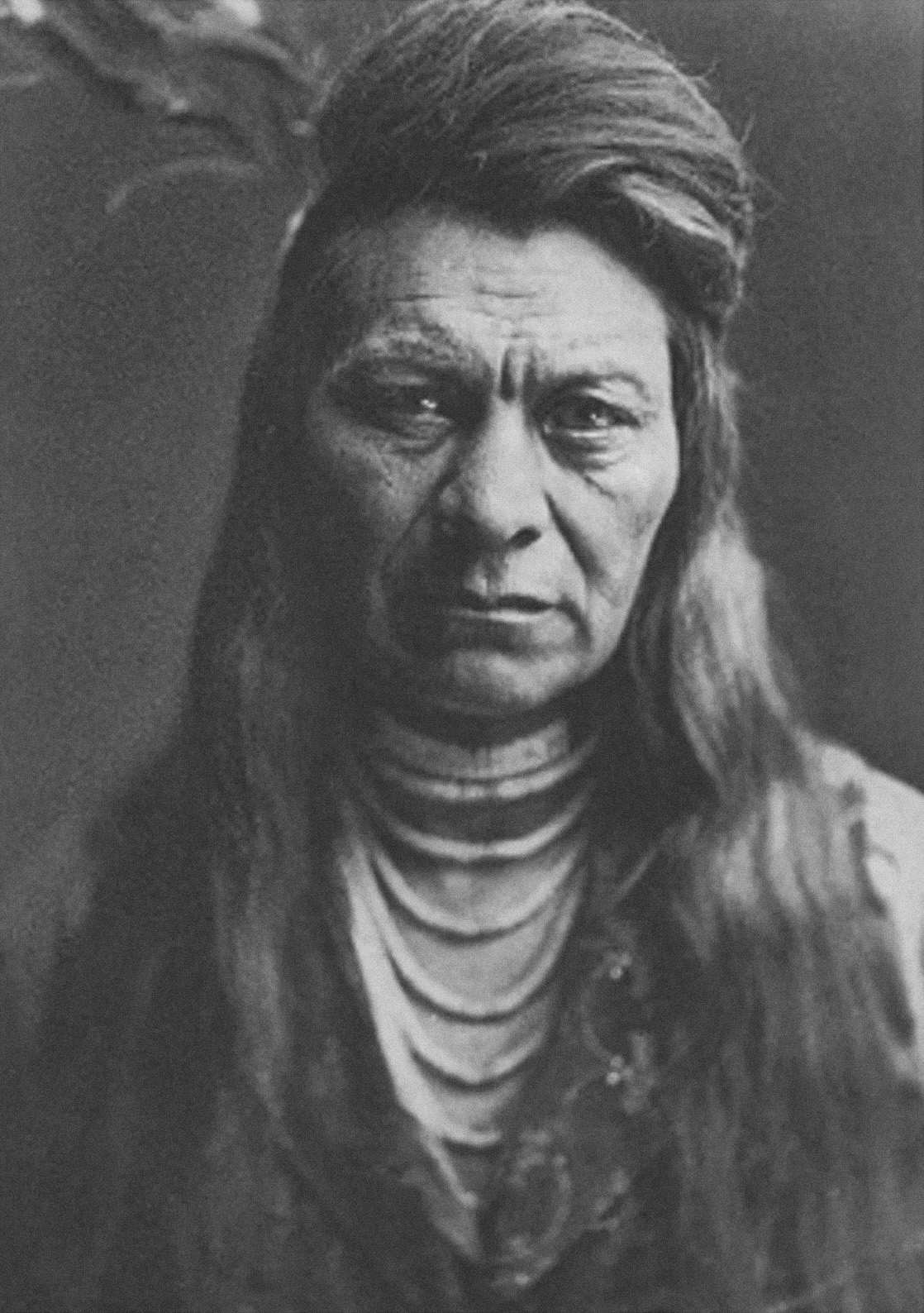
Because the tribe celebrated, a workforce of navy scouts moved fastidiously by way of the underbrush. They heard the low murmur of voices, the barking of canines, and the wail of a child crying. Then they crept again to their very own aspect and plotted their assault.
Simply because the solar was rising on the morning of 9 August, an aged man went to verify on his horses. He headed for the river, however then paused, wanting into the willows. At that second, Colonel Gibbon’s troopers leapt up, shot the person, and ran hollering into the Nez Perce camp.
Warriors got here operating out of their teepees in shock and whirled round to retrieve their rifles, solely to die within the doorway. Horses reared, breaking their tethers, and ran wild throughout the camp. Girls and youngsters ran for the willows, solely to run into extra troopers. Kids watched their moms fall, their our bodies riddled with holes. Joseph picked up his toddler daughter and ran for the comb because the teepees started to burn.
Wahlitits crouched behind a log beside his pregnant spouse, firing shot after shot on the seemingly infinite line of troopers till he was introduced down by returning fireplace. The person who had began the Nez Perce Struggle was lifeless.
Because the rain of bullets stretched from minutes to an hour, the feelings of the tribe shifted from shock to rage. White Chicken yelled to his cowering warriors, “Because the world started, courageous males battle for his or her girls and youngsters! Are we going to run to the mountains and let the whites kill our girls and youngsters earlier than our eyes?”
With rifles scavenged from the ruined teepees and lifeless troopers, the Nez Perce sharpshooters fired on the troopers now occupying their camp. Gibbon determined that the tribe was virtually defeated and ordered his males to retreat to the river, the place the sharpshooters’ bullets discovered their marks. White and Nez Perce our bodies mingled collectively within the red-tinted water.
Gibbon ordered cost after cost in an try to regain the benefit, however every fell aside underneath enemy fireplace earlier than they even made it out of the woods. Throughout the battlefield, the screams of wounded kids and grieving households echoed throughout the once-beautiful meadow. Within the maternity teepee, an aged midwife and new mom lay lifeless, the new child’s head crushed by a boot heel. The physique of Sarpsis Ilppilp, considered one of warriors that had helped Wahlitits with the preliminary murders, was discovered with the beads of his protecting necklace scattered throughout the dust. He was nonetheless dressed within the pink blanket from the Battle of White Chicken Canyon.
When day fell to nighttime, the Nez Perce buried their lifeless—30 warriors, and greater than 60 girls, kids, and aged. Chief Joseph collected his two daughters and his spouse, who had all miraculously survived the slaughter. Then the Nez Perce ran for his or her lives.
After trudging throughout the newly fashioned Yellowstone Nationwide Park, the Nez Perce modified techniques as soon as once more. It was clear that no quantity of distance would persuade Common Howard to cease chasing them; they had been a logo of the outdated world order, a remnant of an America devoid of an American authorities. If the tribe was going to outlive, they wanted to cover someplace the Military couldn’t attain them. And the U.S. Military would cease at nothing—besides maybe the Canadian border.
The rest of the tribe turned north. Howard had no subject choosing up their path; their path was dotted with shallow graves. “Poor Nez Perces!” Howard’s surgeon John Fitzgerald wrote to his spouse, “I’m truly starting to admire their bravery and endurance within the face of so many effectively outfitted enemies.”
However whereas the troopers within the subject had been creating sympathy for his or her enemy, the navy command was unmoved. Howard obeyed his orders to pursue the Nez Perce as winter settled into Montana’s excessive nation.
In the meantime, the jap press continued to print tales in regards to the flight of the Nez Perce. The next poem appeared within the Missoulian underneath the title “Huge Gap,” depicting an imaginary letter from Colonel Gibbon to his superior:
Col. Gibbon to Gov. Potts:
We’re had a tough battle
and I’m sorry to say,
They’ve whipped us out fairly
And the satan’s to pay
I wait at Huge Gap
For a solution from you
And confess on my soul,
I don’t know what to doGov. Potts to Col. Gibbon:
Licked once more? Your command
Almost turned inside out?
Did Chief Joseph take a hand
Or was Howard about?
The newspaper reporters knew little of Nez Perce tradition, however they had been effectively versed in current American and European navy battle. Tales of battle typically targeted on the genius exploits of nice generals: Washington, Napoleon, Ulysses S. Grant. Due to this fact, of their thoughts, a tribe that had continued to carry out in opposition to the U.S. navy will need to have a genius normal on the helm. Chief Joseph—maybe due to his diplomatic historical past with whites, or his sturdy physique, or maybe just because his identify was best to recollect—bought that title.
Howard didn’t discourage this narrative. His defeats had been much less humiliating, and maybe even comprehensible, if he was up in opposition to a navy genius. Possibly, simply possibly, he may pull by way of this ordeal and nonetheless have a job.
With the Nez Perce racing for the Canadian border, the Military deliberated. In the long run, they determined Howard’s horrible efficiency may need a silver lining in spite of everything—the tribe had been lulled right into a false sense of safety. However it was time to deliver out the massive weapons, and that meant Colonel Nelson Miles.
Howard and Miles had historical past collectively. Miles, a self-taught retailer clerk, had served underneath Howard through the first days of the Civil Struggle. After the Battle of Honest Oaks, he’d held onto Howard’s proper arm because it was amputated. However whereas Howard spent his life guided by his evangelical Christianity, Miles opted for relentless ambition. Regardless of his full lack of political connections, the person shortly rose by way of the ranks, even marrying a niece of Common William Tecumseh Sherman.
After the Civil Struggle, Miles moved west and established himself as a dependable destroyer of American Indians. He’d defeated an alliance of the Comanche, Kiowa, Southern Cheyenne, and Arapaho through the Purple River Struggle, and was simply ending up a marketing campaign to destroy the Sioux and Cheyenne that had annihilated Custer on the Battle of Little Bighorn. American Indians knew him as “Bear Coat,” for the heavy fur outerwear he typically wore throughout battle. Handing over Chief Joseph in chains, Miles schemed, may lastly earn him that coveted normal’s uniform.
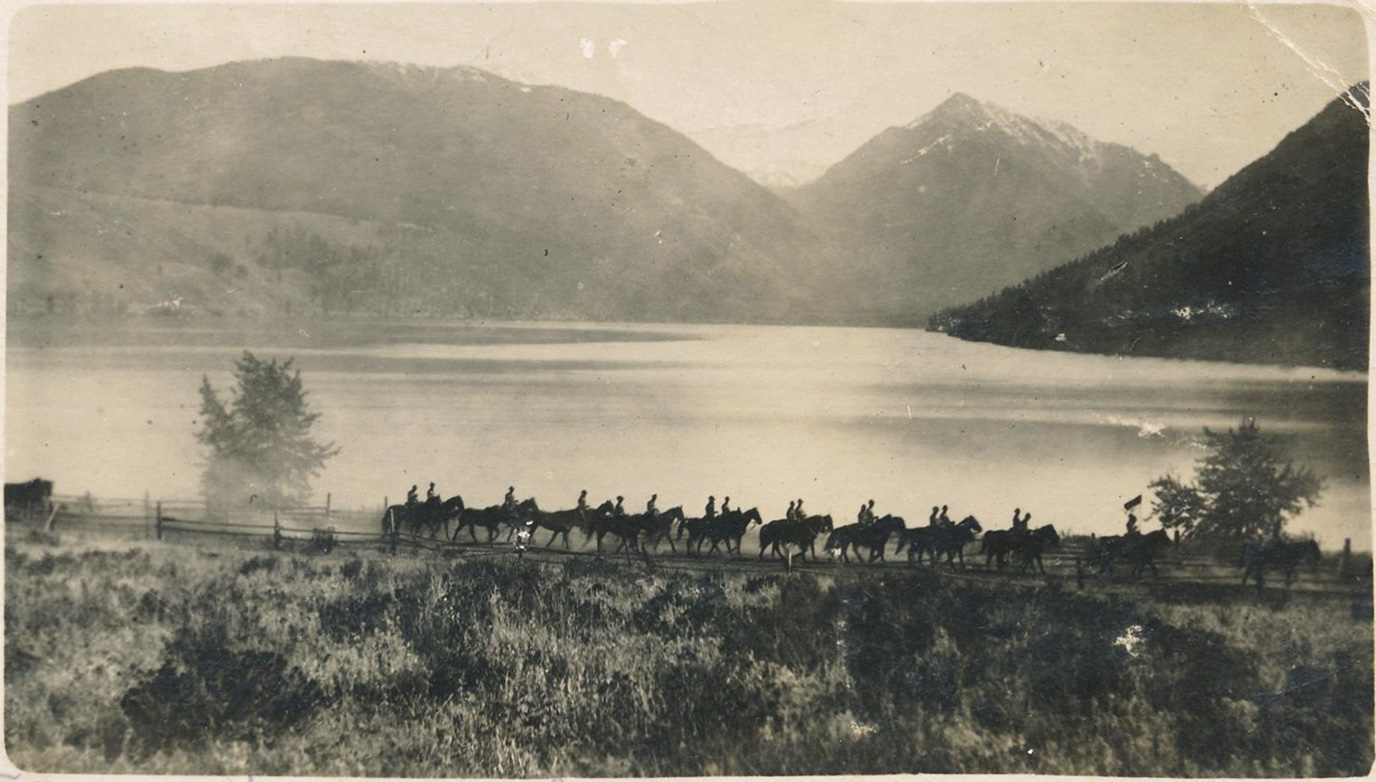
Leaving Fort Keogh with 400 males, Miles marched diagonally into the Nez Perce’s path. The Nez Perce, who had been nonetheless on the lookout for Howard, wouldn’t expect a sideways assault.
On the morning of 30 September, the tribe awoke on the chilly Montana frontier. After touring 1,200 miles in 4 months, they had been lastly nearly executed—solely 40 miles stood between them and freedom. Chief Joseph was having fun with a leisurely breakfast together with his daughters and his nephew Yellow Wolf when scouts arrived with information of a buffalo stampede. The scouts accurately guessed that encroaching troopers had spooked them, however Trying Glass suggested everybody to stay calm. In spite of everything, they had been so shut. What may go incorrect now?
An hour later, a scout approached the camp on horseback, waving a blanket. Everybody understood the warning: troopers had been close to. Immediately, the tribe was a blur of movement.
“Horses!” Joseph shouted, “Save the horses!”
Whereas his brother Ollokot led the soldiers up a bluff to satisfy the military, Joseph and his 12-year-old daughter Tah-hy ran towards the herd. Girls and youngsters grabbed the animals at random, able to race the final 40 miles. Joseph took maintain of a horse and helped Tah-hy onto its again. There was no time so as to add a saddle or reins; nothing to make this determined, solo journey safer for the preteen lady. Joseph handed his daughter the one factor he may: a rope, to assist her cling on. Tah-hy turned the horse towards Canada and took off at a gallop. Inside minutes, she was out of sight.
Joseph rotated. Already, the Military had slid between the herd and the camp, reducing him off from the remainder of the soldiers. Yellow Wolf, who had adopted his uncle’s command to avoid wasting the herd, seemed down on the village from a plateau. He noticed “tons of of troopers charging in two broad, circling wings. They had been surrounding [the] camp.” Though he didn’t comprehend it on the time, on the opposite aspect of that divide, Toohoolhoolzote and 5 different warriors lay lifeless.
Joseph grabbed a horse and jumped on, directing it on the line of troopers separating him from all the things that also mattered. Weapons rang out and bullets tore on the sleeves of his shirt, however he reached the opposite aspect of the road alive.
Joseph dismounted and staggered to the teepee. It was untouched by the combating, the hearth and breakfast issues an uncanny reminder of the home scene that had taken place just a few moments earlier than. Within the teepee, Joseph’s ready spouse pressed a rifle into his palms. “Right here’s your gun,” she stated, “Battle!”
Joseph took the gun and ran to the bluff the place his youthful brother had led nearly all of the soldiers. By the point he arrived, Ollokot was already lifeless.
The Nez Perce continued to fireside on the troopers till the solar went down. That evening, Yellow Wolf dug trenches that may hopefully function a protecting defend within the subsequent day’s combating. An outdated man wandered by way of the camp, gathering the names of people that had escaped earlier than the battle. Everybody eagerly listened for his or her family and friends. Yellow Wolf heard his mom’s identify and felt each pleasure and grief on the information. He may by no means see her once more, and he hadn’t even stated goodbye.
Somebody would inform the Sioux what had occurred, the soldiers advised one another time and again. Among the warriors that had gained the Battle of Little Bighorn stood simply over the border, residing in exile in Canada. Certainly they’d come to rescue them.
As Yellow Wolf crouched inside the ditch, his thoughts returned to the Wallowa Valley. “Of my very own nation the place solely Indians lived there. Of teepees alongside the bending river. Of the clear, blue lake, broad meadows with horse and cattle herds…I felt as dreaming.”
However when daybreak broke, he was nonetheless on the barren prairie, his cold-numbed fingers nonetheless clutching his gun. As gentle rose over the horizon, Trying Glass stood up from the trenches to look into the gap, squinting for the Sioux warriors. An American bullet struck him within the head. The chief was lifeless earlier than he hit the bottom.

]It was time, Joseph determined, to place an finish to all this. On the morning of 01 October, Yellow Wolf stepped out of the ditch waving a white flag. Via a half-Nez Perce man named Tom Hill, he knowledgeable Miles that his uncle wish to communicate with him. Quickly afterward, Chief Joseph was within the normal’s tent.
“He spoke English in a really deliberate approach, uttering every phrase slowly with out emphasizing any explicit one,” a gift soldier remarked later. Via the translator, Chief Joseph defined that he was solely considered one of a number of leaders of the Nez Perce, so nothing they mentioned can be binding. Miles ignored him, continuing with the assembly as if Joseph was in cost. After a number of irritating conversations, it was clear nothing was going to be determined. Joseph bought as much as go away.
Then, implausibly, Miles stated that Joseph was now a hostage. The remainder of the boys had been free to go.
It was a transparent violation of the truce each side had simply agreed to. However in his thoughts, Miles was combating American Indians, and the principles of warfare solely utilized to civilized folks. Moreover, Miles was satisfied this could lastly deliver the warfare to an finish. Chief Joseph was clearly the mastermind behind all this, and capturing him would render the tribe defenseless. Give up can be imminent.
A number of troopers continued firing into the Nez Perce camp, regardless of the very fact the tribe respectfully refused to fireside again. However different People had been shocked to listen to of the truce violation. Mixed with the truth that the Nez Perce weren’t dropping their minds over the lack of their genius navy strategist, Joseph was returned to the Nez Perce camp the subsequent day.
Bullets sporadically showered the trenches as Joseph tried to persuade the tribe that give up was the best choice. White Chicken was fully opposed. “Common Miles and Common Howard are mad,” he advised the tribe. The aged chief had already walked tons of of miles with a purpose to stay free from navy oppression and he wasn’t going to surrender this near victory. “They may get of their energy, and provides us heavy punishment. You may go! Be a slave if you want! I’m going to Sitting Bull! All who need to go together with me can achieve this.”
Because the negotiations dragged on, warriors slipped out of the camp. It was clear that the Sioux weren’t coming.
However Chief Joseph stayed. “We may have escaped from Bear Paw Mountain if we had left our wounded, outdated girls, and youngsters behind,” he later wrote. “We had been unwilling to do that.” The time of battle was over. Now, the Nez Perce wanted a politician to get them the very best give up deal attainable.
On 04 October, Common Howard arrived on the battlefield. They could have been adversaries, however Howard and Joseph had developed a begrudging mutual respect. After the disastrous assembly with Miles, this was any person that Joseph may negotiate with.
In messages carried forwards and backwards between the camps, Howard laid out the phrases of give up. The situations set by the Military had been easy: if the Nez Perce surrendered, they may stay peacefully on the reservation they’d agreed to at that fateful assembly 5 months in the past. Joseph requested the tribe for his or her consent. They agreed.
The next morning, Joseph rode his horse throughout the snowy Montana plain with a rifle in his lap. 5 warriors stood round him, strolling slowly as they made a funeral-style march by way of the grass. Their 1,200-mile journey was at an finish.
The social gathering halted in entrance of the representatives from the U.S. Military, which included Miles, Howard, and two lieutenants. To facilitate the Nez Perce give up was none apart from Advert Chapman, probably wearing his signature white hat. Though he’d brought about the Battle of White Chicken Canyon and additional sophisticated the Battle of Cottonwood Creek, the Military begrudgingly accepted that he was the one white man round who claimed to talk Nez Perce. Moreover, Joseph knew Chapman. Higher the satan you knew than the satan you didn’t.
Chief Joseph dismounted, nonetheless holding the rifle. The white People hesitated; this wasn’t a part of the plan. However slightly than intention the weapon, Joseph prolonged it towards Common Howard.
Howard froze. Over the previous few days, Miles had made it clear that this was his victory, and nobody had higher attempt to steal it from him. However Howard had been the person on the bottom from day one, and Miles had merely proven up within the closing chapter. If anybody deserved this rifle, it was him. And Joseph was providing it to him.
After solely a momentary pause, Howard gestured to Miles. Joseph turned to the person who’d held him captive and handed him the rifle of give up. He stated a couple of phrases in his native language.
Then, Chapman translated Joseph’s well-known phrases of give up: “From the place the solar now stands, I’ll battle no extra.”
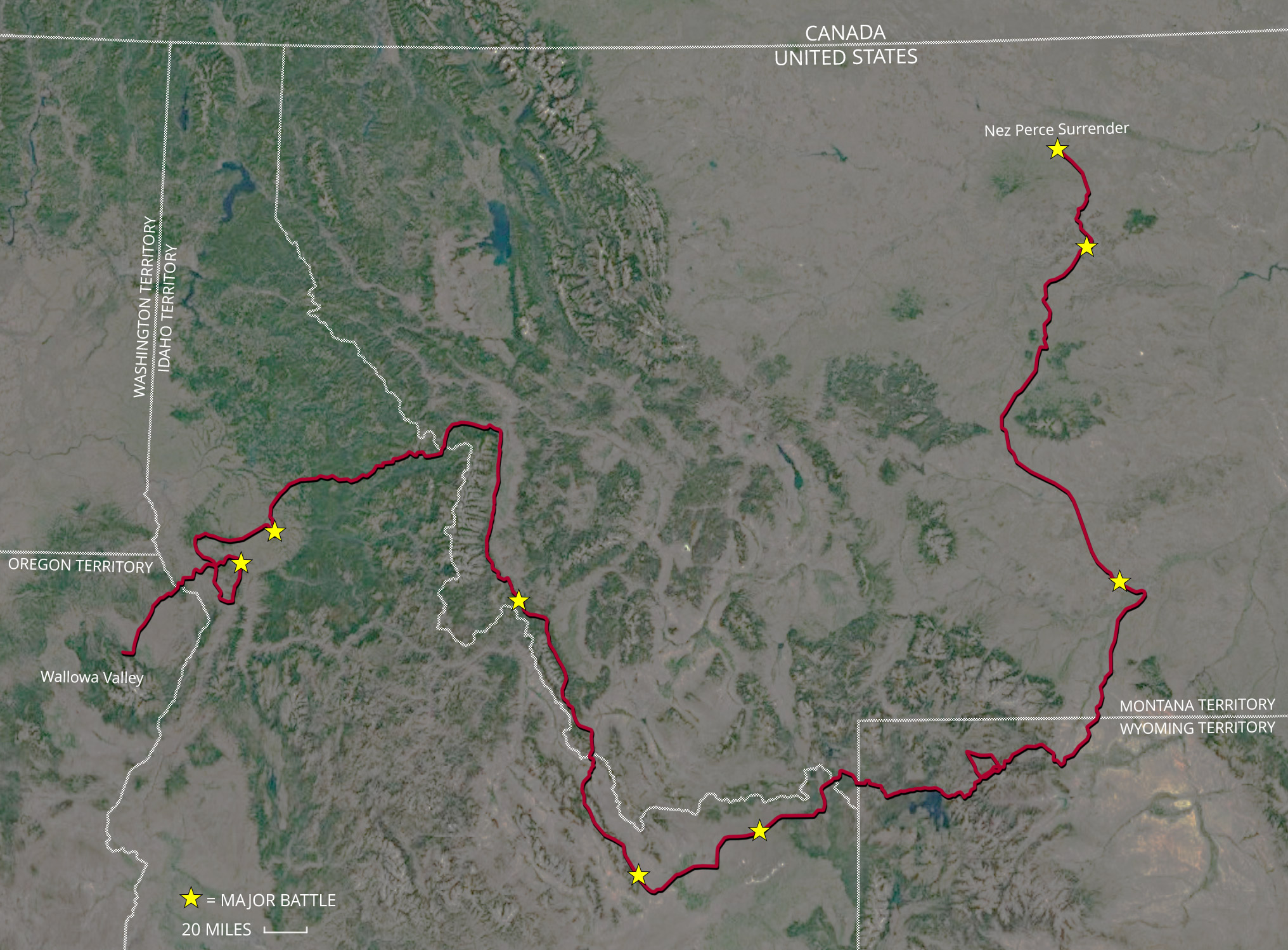
After his Montana give up, Chief Joseph turned mythologized. Though he was considered one of 4 chiefs, he had been the one most snug negotiating with whites. Therefore, Joseph loomed bigger than Toohoolhoolzote, White Chicken, or Trying Glass within the minds of the American troopers. Already, he was changing into half of a bigger narrative.
Instantly following Joseph’s give up, Howard’s aide and aspiring poet Charles Erskine Scott Wooden launched an announcement to the press that he claimed included a direct transcription of Chapman’s translation of Joseph’s speech:
“Inform Common Howard I do know his coronary heart. What he advised me earlier than — I’ve it in my coronary heart. I’m bored with combating. Too-hul-hul-sit is lifeless. Trying Glass is lifeless. He-who-led-the-young-men-in-battle [Ollokot] is lifeless. The chiefs are all lifeless. It’s the younger males now who say ‘sure’ or ‘no.’ My little daughter has run away upon the prairie. I have no idea the place to search out her—maybe I shall discover her too among the many lifeless. It’s chilly and we have now no fireplace; no blankets. Our little kids are crying for meals however we have now none to provide. Hear me, my chiefs. From the place the solar now stands, Joseph will battle no extra perpetually.”
Whether or not the aide embellished the transcription is up for debate, however whether or not the phrases had been impactful just isn’t. Because the tribe was introduced by way of Bismarck, residents flooded the streets within the hope of catching a glimpse of Joseph.
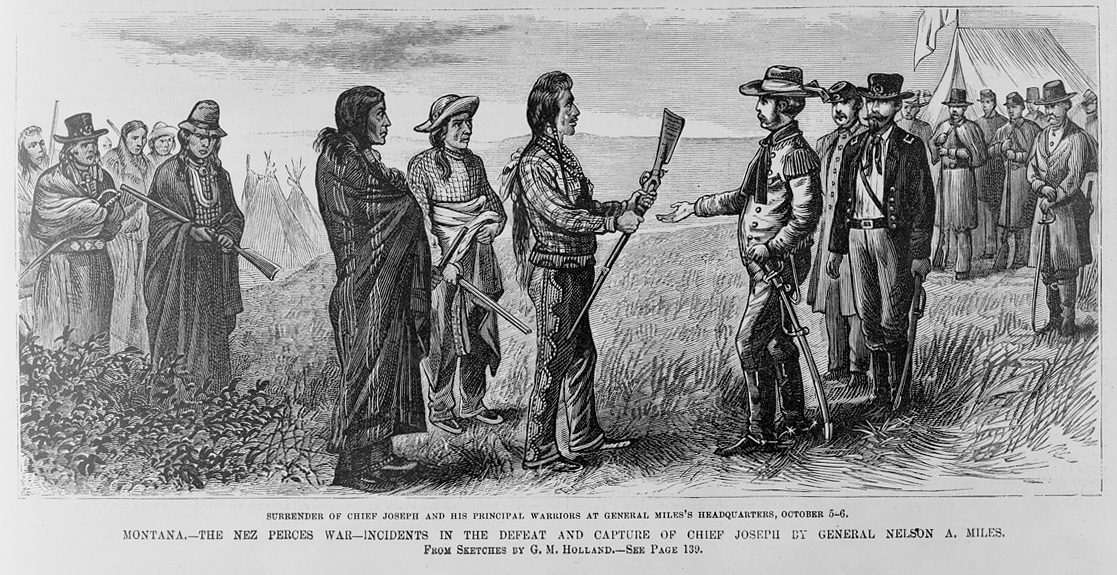
Common Howard was additionally accountable for the mythmaking. His ebook, Nez Perce Joseph, furthered public perception that the chief was a genius “Purple Napoleon” that he had notably dominated. His marketing campaign, within the public creativeness, turned the grand finale to a generational wrestle. The Nez Perce had been the final tribe that actually resisted the U.S. authorities, and Joseph’s give up turned a bookend for the American west. It turned the second the troops that had freed the southern slaves lastly dominated the western natives.
At this time, numerous landmarks within the Pacific Northwest bear Chief Joseph’s identify. In 2012, the shirt he wore through the give up offered for practically $1 million at public sale. And within the American Expertise pavilion of Disney World’s Epcot, an animatronic Chief Joseph offers his poetic give up speech to packed audiences.
After the warfare, Common William T. Sherman violated the give up settlement and despatched the tribe to a prisoner of warfare camp in Kansas. Eight months later, the surviving tribe members had been despatched by rail to Indian Territory, which might later turn out to be the state of Oklahoma.
Colonel Nelson Miles was promoted to normal shortly after Joseph’s give up, and later rose to the rank of main normal. He and Howard quarreled over who was accountable for the Nez Perce victory for the remainder of their lives.
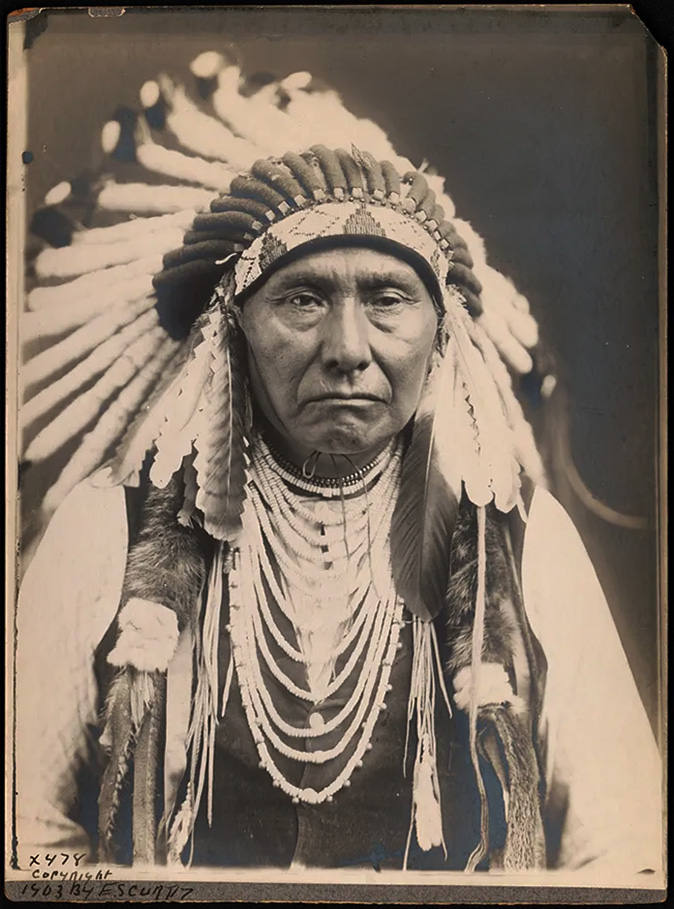
Chief Joseph made a number of journeys to Washington, D.C., to plead that the Nez Perce be allowed to return to the Pacific Northwest. His request was granted. In 1885, he and his followers moved to the Colville Indian Reservation in Washington, the place the outdated chief died in 1904. He by no means once more visited the Wallowa Valley.
Joseph’s 12-year-old daughter Tah-hy made it to Canada and lived among the many Sioux earlier than returning to Montana underneath the affect of missionaries. The infant daughter that had survived your entire warfare died on the Oklahoma reservation.
Finally, the tribe bought 150 acres of land within the Wallowa Valley close to the city of Joseph, additionally named for the legendary chief. The tribe celebrated the return with a standard parade, not in contrast to the te-lik-leen that had began the battle so way back.
“100 and forty 4 years in the past, there would have been a whole lot of tears and we are able to nonetheless really feel their harm,” stated Nez Perce Vice Chairman Shannon Wheeler on the celebration in spring 2020. “However in the present day there are tears of pleasure. We’re coming dwelling in the present day.”
© 2023 All Rights Reserved. Don’t distribute or repurpose this work with out written permission from the copyright holder(s).
Printed from https://www.damninteresting.com/from-where-the-sun-now-stands/
Because you loved our work sufficient to print it out, and browse it clear to the top, would you contemplate donating a couple of {dollars} at https://www.damninteresting.com/donate ?

